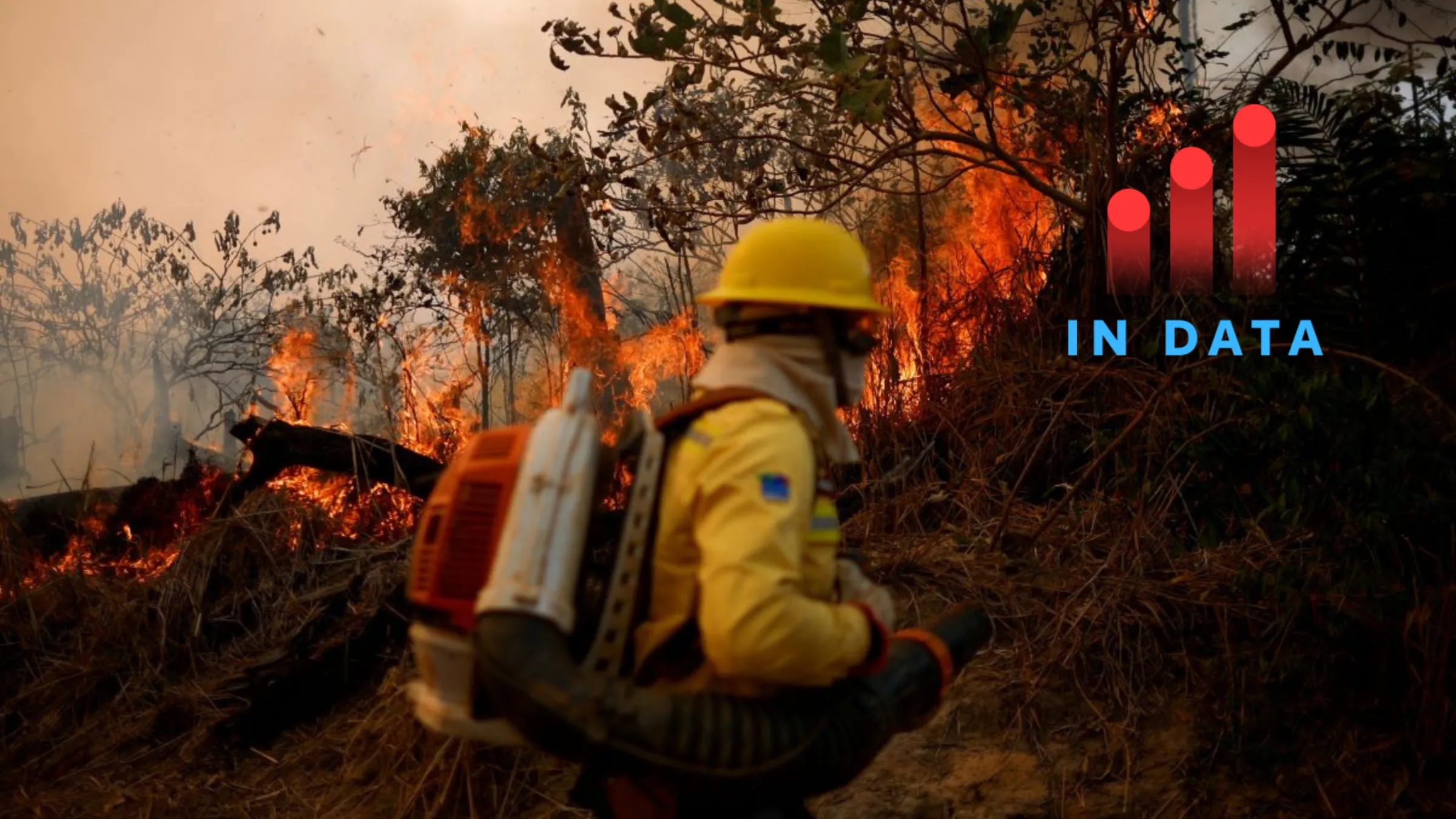Context is powered by the Thomson Reuters Foundation Newsroom.
Our Standards: Thomson Reuters Trust Principles

A member of Brazilian Institute for the Environment and Renewable Natural Resources (IBAMA) fire brigade works to extinguish a fire rising in Amazon rainforest in Apui, Amazonas state, Brazil, August 8, 2024. REUTERS/Adriano Machado
As leaders meet for COP30, data shows that big emitters are flunking their targets while fires ravage the Amazon rainforest.
MEXICO CITY - The U.N. COP30 summit kicks off in Belém, Brazil next week with key indicators showing the world is failing to meet its own pledges on global warming.
From cutting emissions to saving tropical forests, action on the ground has not matched the fine words pledged at previous COP summits.
Lack of progress - in both the developing and industrial world - comes against a backdrop of stark economic upheaval, rising geopolitical tensions and war on multiple fronts. Not to mention U.S. President Donald Trump's dismissal of climate change as "the greatest con job" in the world.
Two new climate trackers created by Context show what progress Amazon basin countries are making to stem deforestation in the world's largest tropical rainforest, as well as detailing efforts by the big powers to reduce greenhouse gas emissions.
Deforestation in the Amazon basin, which spans nine countries, decreased 7.5% in 2024 compared to the 2018-20 baseline, according to the World Resources Institute (WRI).
A fall may sound good but it dashes hopes of meeting a regional commitment to halt deforestation altogether.
In Brazil's Amazon, deforestation fell 11.08% in the 12 months to July 2025, compared with the same period a year earlier, reaching its lowest level since 2014, according to a report by Brazilian space research agency Inpe.
The current rate of deforestation is still too high to meet a 2030 target of zero deforestation in major rainforests, agreed in multiple international commitments, according to WRI.
To achieve zero deforestation in 2030, the Amazon basin must maintain an annual deforestation reduction rate of 20%, WRI estimates show.
The current picture shows the annual slowdown in deforestation is not even half the rate.
A June report by Monitoring of the Andes Program (MAAP) found that human-driven loss of forest in the Amazon - for instance due to farming - has slowed down.
Forest fires have instead emerged as the Amazon's biggest threat, with a record-breaking 2.8 million hectares of primary forest lost in 2024, according to MAAP.
Most are caused by people, according to MAAP, and 70% of major fires in the Brazilian Amazon burn in already deforested areas.
The expansion of soy plantations in Brazil and Bolivia, and deforestation by Mennonite colonies in Peru, combined with more severe and prolonged drought, are also fuelling fires in the Amazon, the MAAP analysis found.
About half of carbon emissions are soaked up by forests, land and oceans, according to Oksana Tarasova, a senior scientific officer at the World Meteorological Organization.
But drought conditions mixed with cyclical El Niño weather have caused so much stress that trees in the Amazon are now less efficient at absorbing gases, said Tarasova.
To reach the target set in the 2015 Paris Agreement to limit global warming to 1.5 degrees Celsius, greenhouse gas emissions must decline 43% by 2030, according to the United Nations.
Global emissions of greenhouse gases have increased 65% in 2024 compared to 1990, according to the Emissions Database for Global Atmospheric Research (EDGAR) by the European Union.
Carbon dioxide emissions accounted for 74.5% of total emissions in 2024 and have increased by 74.9% since 1990, the EDGAR database shows.
China, the United States, India, the 27 countries of the European Union, Russia and Indonesia, which account for 51.4% of global population, are the world's biggest emitters.
The top 10 emitters are off track to meet their targets, according to Climate Action Tracker, which rates countries' pledges against the actual emission levels they must hit if they are to meet their Paris commitments.
China, the top global emitter with 15,536 metric tons of carbon dioxide equivalent emitted in 2024, has seen a rapid growth both in coal power construction and solar and wind projects, the EDGAR database of global emissions analysis shows.
The United States, the world's No 2 emitter, has "the most aggressive, comprehensive, and consequential climate policy rollback", according to Climate Action Tracker.
Trump has withdrawn from the Paris agreement - twice - and will send no high-level officials to COP30.
(Reporting by Diana Baptista; Editing by Lyndsay Griffiths and Anastasia Moloney.)
Context is powered by the Thomson Reuters Foundation Newsroom.
Our Standards: Thomson Reuters Trust Principles